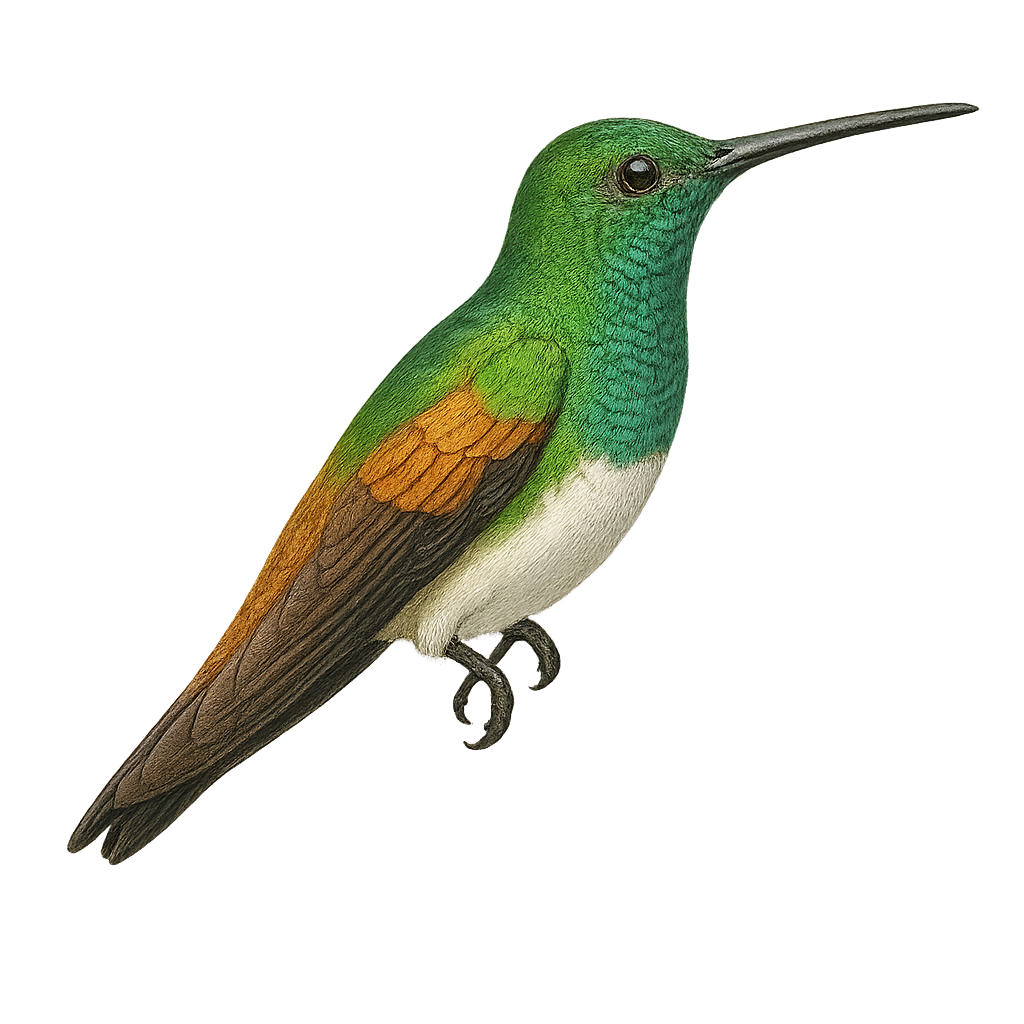Your wildlife photography guide.
Explore the edward's hummingbird in detail, study its behavior, prepare your shots.
Where to observe and photograph the edward's hummingbird in the wild
Learn where and when to spot the edward's hummingbird in the wild, how to identify the species based on distinctive features, and what natural environments it inhabits. The WildlifePhotographer app offers tailored photography tips that reflect the edward's hummingbird’s behavior, helping you capture better wildlife images. Explore the full species profile for key information including description, habitat, active periods, and approach techniques.
Edward's Hummingbird
Scientific name: Amazilia edward

IUCN Status: Least Concern
Family: TROCHILIDAE
Group: Birds
Sensitivity to human approach: Suspicious
Minimum approach distance: 5 m
Courtship display: March to June
Incubation: 15-17 jours
Hatchings: March to July
Habitat:
Tropical forests, wooded areas, forest edges
Activity period :
Primarily active during the day, with peak activity in the morning and late afternoon.
Identification and description:
The Edward's Hummingbird, or Amazilia edward, is a small, captivating bird belonging to the Trochilidae family. This hummingbird is distinguished by its brilliant plumage, with shades of emerald green and metallic blue that catch the eye. It primarily inhabits the tropical rainforests and wooded areas of Central America, where it feeds mainly on nectar but also on small insects. Its fast and agile flight allows it to move easily between flowers, thus contributing to pollination. Despite its small size, this hummingbird plays a crucial role in its ecosystem. Its breeding period is often marked by spectacular courtship displays, where the male showcases his vibrant colors to attract the female.
Recommended lens:
400 mm – adjust based on distance, desired framing (portrait or habitat), and approach conditions.
Photography tips:
To photograph the Edward's Hummingbird, it is advisable to use a 400mm lens or longer to capture detailed images without disturbing the bird. Find a spot where hummingbirds feed regularly and be patient. Use a tripod to stabilize your camera and set a fast shutter speed to freeze the rapid movement of their wings. Natural morning or afternoon light is ideal to highlight the vibrant colors of their plumage.
The WildlifePhotographer App is coming soon!
Be the first to explore the best nature spots, track rutting seasons, log your observations, and observe more wildlife.
Already 1 429 wildlife lovers subscribed worldwide

